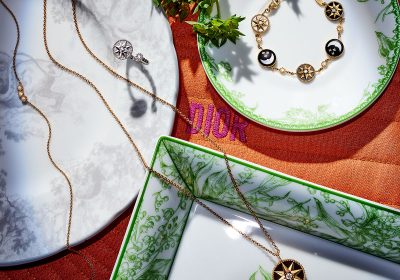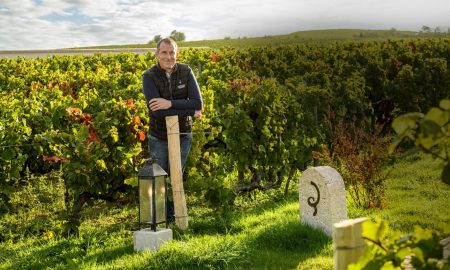A drive out to the Robert Mondavi Winery in Oakville, California, is a scenic tour through the rolling hills of Napa Valley. The road meanders by some of the 400 vineyards that dot the valley and passes through villages that offer some of the finest dining in the country, as well as five-star boutique hotels and shopping destinations.
It is quite a different landscape than in 1966, when the late Robert Mondavi set out to build the first Napa Valley winery constructed since Prohibition. At that time, Napa Valley was a farm community with a few vineyards, even though the name is derived from the Wappo Indians’ word meaning “land of plenty.” Charles Krug established Napa Valley’s first commercial winery in 1861 (which was eventually purchased by the Mondavi family), and it wasn’t long before more than 140 wineries operated in the region. But declining prices of wine and an infestation of phylloxera (plant lice) led to the abandonment of many of these vineyards, and the land sat unused as wineries deteriorated beyond a state of repair. While a revival of some of the vineyards began in the 1940s, a time that coincided with the founding of the Napa Valley Vintners Association, wines from California were deemed subpar in the global market, as no one thought that the climate and land could produce a vintage rated anything more than decent.
Enter Robert Mondavi. His passion for wine was inherent; his father’s California-based company, C. Mondavi and Sons, packed and shipped grapes across the nation for home winemaking purposes. Robert attended Stanford where he received his degree in economics and business administration, at which time he joined his father and brother, Peter, at the Charles Krug Winery. After his father’s death, a feud with Peter about how to run the winery resulted in a fistfight, and Robert was asked to leave the business in 1965. Robert used the opportunity to purchase land in Oakville and Rutherford and launch Robert Mondavi Winery under his own ambitious vision of creating world-class wines. (He later sued for his share of Charles Krug and was awarded most of the family’s important vineyards in Oakville, although Peter remains in charge of the Charles Krug brand.)
In the land and grapes of California, Robert Mondavi saw potential where others did not; he ardently believed he would be able to create wines that would compete with the finest vintages from France and Italy. Many thought he was crazy, but time would prove that he was nothing short of brilliant. Less than a decade after its launch, two former winemakers of the Robert Mondavi Winery won first prize at an historic Paris tasting, elevating the Napa Valley winery in the eyes of the world’s most stringent oenophiles.
Upon Robert Mondavi’s passing at age 94 in 2008, Napa Valley lost its biggest global ambassador. He was tireless in his quest to create fine wine fit for a connoisseur. But as the idiom goes, behind every great man is a great woman. In Robert’s case, that woman was his second wife, Margrit Mondavi. If Robert Mondavi is known as the founding father of modern Napa Valley, Margrit is without a doubt the first lady of California wine.
The Swiss-born Margrit Biever had a life-long goal of uniting wine with fine arts, music, and culinary artistry. When she began working at Robert Mondavi Winery just two years after its founding, it was in a position that today would be referred to as public relations, something that Napa Valley desperately needed. Robert had established a tour and tasting program at the vineyard as soon as it was founded, with a goal of educating guests about the land and the winemaking process. As an active and vocal supporter of the winery, Margrit took this to a whole new level, which soon caught the attention of Robert Mondavi himself, and later the rest of the world.
Without the steadfast efforts of Margrit, Robert could have continued to make the finest wine to ever come out of California, but few would have known about it. In the late 1960s, few visitors made their way to Napa Valley, as there simply weren’t worthy destinations to explore. Margrit made it her mission to change that, first establishing a Sunday art show under the famous arches at the entrance to the winery. She combined the works of established masters with unknown artists, and paired it with fine cuisine and, of course, wine from the vineyard. She soon established an art program at the winery as well, with ever-changing exhibits in the Vineyard Room showcasing celebrated, local, and emerging artists in photography, sculpture, painting, and other visual arts. By featuring a new exhibit every two months, she created a constant reason for people to return to the winery.
“For the first 27 years we never did advertising so of course anything that we did that brought that feeling of wine, food, and the arts together was very important,” Margrit explains. “It was our way to show the wines to the world.” In 1969, she launched the Summer Music Festival, an event that is still going strong today. During a lunch in the Vineyard Room immediately following our photo shoot, Margrit explains that the first year was more than a struggle. “We couldn’t use any money from the vineyard,” she says, “so we borrowed everything we needed to put this together.” She personally solicited chairs from a local church and a portable stage from an area high school for the concert, which featured the Napa Valley Symphony, a guitar soloist, and the Xoregos Dance Company. That first year, tickets were a mere $3 and more than 400 people attended, a wild success for the brand new winery.
Each year, the Summer Music Festival evolved, and now is known as the social event of the season for Napa Valley. The likes of Buena Vista Social Club, Ella Fitzgerald, Benny Goodman, Lena Horne, Tony Bennett, Sarah Vaughan, Johnny Mathis, Boz Scaggs, Aimee Mann, and Stan Getz have all hit the stage at Robert Mondavi Winery, and the event has raised more than $2 million primarily in support of the Napa Valley Symphony, as well as the Napa Valley Unified School District. In 1984, she also launched the Winter Classical Concert at Robert Mondavi Winery, which benefits local music organizations like the Napa Valley Opera. Her dedication to the arts also led her to form a board of directors to rebuild the 19th-century opera house in Napa, which opened in 2002.
Her passion for spreading the Mondavi name extended beyond being the ultimate hostess; she was an advocate for the wines themselves. She speaks six languages, including Japanese, and before the brand made it big, she used these skills to personally pen hand-written letters to some of the biggest sommeliers throughout the world about Robert Mondavi Winery, also sending cases of wine for them to try. Along with Robert she traveled extensively, personally introducing the brand to global tastemakers. “It was so fulfilling when the wines began appearing on the wine lists in some of the most respected restaurants in France and Italy,” she shares.
With an innate understanding that fine wine and cuisine go hand-in-hand, 10 years after joining Robert Mondavi Winery, Margrit launched a culinary program. “Bob always said, ‘We’ve got it all (in California), the ocean for fish and seafood, the grains, the meat, so let’s put it together. The table was always so important to Bob.” The program began as the Great Chefs of France, but as renowned chefs began to emerge in America, Margrit introduced the Great Chefs of America program.
Iconic culinary artists like Julia Child, Alice Waters, Simone Beck, Jean Troisgros, Marcella Hazan, Thomas Keller, Jacques Pépin, and Wolfgang Puck are amongst the luminaries that Margit brought to the winery’s kitchen throughout the last 30 years.
In 2003, Margrit and her daughter, Annie Roberts, the winery’s executive chef for 27 years, collaborated to write Annie and Margrit: Recipes and Stories from the Robert Mondavi Kitchen. The tome took home the “Best in the World” honor during the 2003 Gourmand World Cookbook Awards.
Keeping with Robert’s vision that fine food and wine go hand-in-hand, many great chefs came together this year at the vineyard for Taste Napa Valley during Auction Napa Valley. The location was very fitting, as Robert helped found the auction weekend in 1981. In total, Auction Napa Valley has raised more than $85 million to benefit area healthcare, affordable housing, and youth-service nonprofits. Terry Hall, the communications director for Napa Valley Vintners, the association behind ANV, said, “It seemed like a fitting tribute to carry on the legacy of Robert Mondavi’s visions for the auction to be held at the iconic winery the year following his passing.”
The impact of the couple is felt in virtually every cultural facet throughout Napa Valley. They were the founding patrons of COPIA: The American Center for Wine, Food, and the Arts, with a donation that topped $20 million. It was Margrit who found the downtown Napa location for the center, which opened in 2001. (Unfortunately, the center closed its doors and filed for bankruptcy protection at the end of 2008.) The couple also co-founded the Oxbow School in Napa, an art school that offers a live-in semester-long program to high school juniors and second-term seniors that includes hands-on studio work with college-level instructors and nationally known artists.
At the University of California at Davis, the Mondavis donated $25 million to establish the Robert Mondavi Institute for Wine and Food Science, and another $10 million to finish the campus’ performing arts center, which also bears their name. Despite neither of the Mondavis attending the school, at the time of the donation, Robert explained the reason behind it. “UC Davis has been a true partner in building the international reputation of the California wine industry,” he said. “California wines are equal to the world’s best in quality, diversity, and excitement. We are now leading the way with UC Davis graduates at the helm of many of our finest wineries, Robert Mondavi Winery included. We are greatly honored to support UC Davis with new facilities that ensure its position as the world’s leading educational center for viticulture, enology, and food science.”
In June 2004, UC Davis presented Robert and Margrit with the UC Davis Medal, the highest honor bestowed by the university. “I am delighted to award the UC Davis Medal to them for all that they have done for this university, for the state, for everyone desiring a meaningful and enriched life,” Chancellor Larry Vanderhoef said at the time. “I can’t imagine more deserving recipients.”
The Institute, which opened just months following Robert’s death, really exemplifies the Mondavis’ commitment to Napa Valley as a whole. Rather than competing with other wineries, Robert often did anything he could to help them succeed, whether that meant offering advice, funds, or lending a helping hand. During his life in Napa Valley, he expanded Robert Mondavi Winery into the region’s flagship brand. The company was sold to Constellation Brands in 2001 for more than $1 billion, but it is business as usual at the winery. Haute Ambassador of Winemaking for Haute Living San Francisco Genevieve Janssens, who is the director of winemaking for the winery, works tirelessly to uphold Robert’s vision, and Margrit is still actively involved in the social and artistic aspects of the winery.
As Napa Valley evolved into a cultural destination, Robert knew it was important for other wineries to evolve as well. He epitomized the term “team player,” often pairing up with prominent European vintners for special projects. The most remarkable of these is of course Opus One, which first launched in 1979. It was a collaboration between Mondavi, one of the most celebrated American winemakers, and Baron Philippe de Rothschild of Bordeaux’s famed Château Mouton-Rothschild. When Baron Philippe fell ill, his daughter, Baroness Philippine de Rothschild, stepped into his role. “I worked with Robert Mondavi directly while completing the winery, and now we have this place that I love,” she said in an interview with Haute Living. In 1988, Opus One became the first ultra-premium California wine to be sold in France, the U.K., Switzerland, and Germany.
David Pearson, the current CEO of Opus One, explains the powerful partnership. “When you bring together two great winemaking families, like Rothschild and Mondavi, you necessarily have great expectations. When these two families came together, it brought the focus of the world to a region that had promise, and this set us up to become one of the great winemaking regions of the world.” It certainly worked; the release of the first vintage coincided with the premiere Auction Napa Valley, where a case of Opus One sold for an astonishing $24,000 in 1981.
It was a defining moment for California, and the United States as a whole. Robert Mondavi achieved his vision of creating wines that were equal to those from Europe, and he continued to give back to the community, ensuring that it will continue to thrive. Margrit says that she would like people to remember all of the strides that Robert made in the region and industry. Any look around Napa Valley, and it is apparent that it would be impossible to ignore the everlasting impact of Robert and Margrit Mondavi.





















